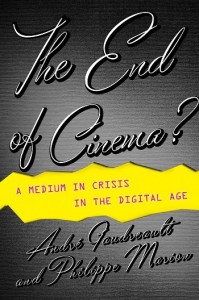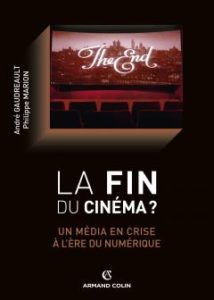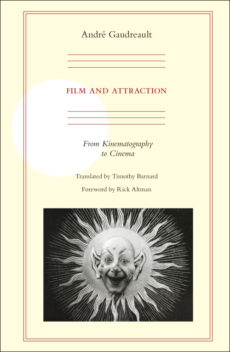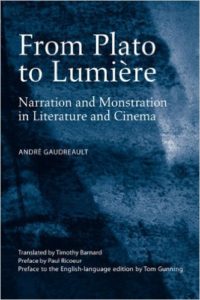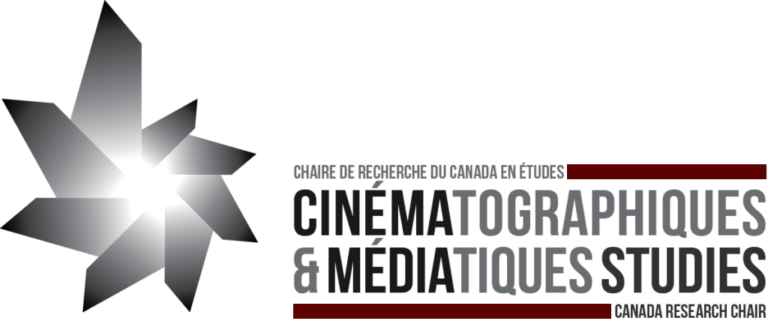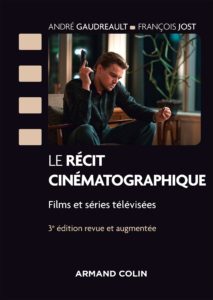
Publication of the 3rd edition of the book Le récit cinématographique
André Gaudreault and François Jost, Armand Colin, 2017
For this new edition, film references have been updated, the study of narrative has been extended to television series and analyses of sequences from films and television series have been added to illustrate the use to which the book’s concepts can be put.
The End of Cinema? A Medium in Crisis in the Digital Age
André Gaudreault and Philippe Marion
(translated by Timothy Barnard), Columbia University Press, 2015
Is a film watched on a video screen still cinema? Have digital compositing, motion capture, and other advanced technologies remade or obliterated the craft? Rooted in their hypothesis of the “double birth of media,” André Gaudreault and Philippe Marion take a positive look at cinema’s ongoing digital revolution and reaffirm its central place in a rapidly expanding media landscape.
La fin du cinéma? Un média en crise à l’ère du numérique
André Gaudreault and Philippe Marion, Armand Colin, 2013
The End of Cinema? A Medium in Crisis in the Digital Age
André Gaudreault, Philippe Marion, Columbia University Press, 2015, translated by Timothy Barnard
Submerged by the breaking digital wave that is radically confusing media boundaries (cinema, television, graphic novels, the Internet, smart phones, etc.), cinema, it is said, is dying: the warmth of photochemical film has given way to cold pixels while satellite transmissions of non-film entertainment have begun to overrun movie theatres. And yet cinema is everywhere, on new devices and new screens. Nevertheless, we might ask ourselves whether a film on DVD, shown on a video screen, is still cinema, or whether the encoded images of digital compositing and motion capture are also still cinema.
Basing themselves on their hypothesis of the “double birth of media,” the authors of The End of Cinema? examine the convulsions cinema’s identity is going through today and offer keys to understanding the impact of digital technology on today’s media galaxy. Are we witnessing cinema’s third birth?
Film and Attraction : From Kinematography to Cinema
André Gaudreault (Translated by Timothy Barnard), University of Illinois Press, 2011
Establishing a new vision for film history, Film and Attraction: From Kinematography to Cinema urges readers to consider the importance of complex social and cultural forces in early film. André Gaudreault argues that Edison and the Lumières did not invent cinema; they invented a device. Explaining how this device, the kinematograph, gave rise to cinema is the challenge he sets for himself in this volume. He highlights the forgotten role of the film lecturer and examines film’s relationship with other visual spectacles in fin-de-siècle culture, from magic sketches to fairy plays and photography to vaudeville.
Cinéma et attraction. Pour une nouvelle histoire du cinématographe
André Gaudreault, CNRS Éditions, 2008
To return to the threshold of cinema: that is the challenge of this volume. Going beyond traditional film histories, André Gaudreault demonstrates that in 1895 the Lumière brothers invented a device which made it possible to project animated pictures, the Cinématographe, but in no way invented cinema. Cinema was not “invented” and there was no patent to file; rather, it was instituted gradually and collectively. André Gaudreault offers us a new approach in this well-documented book. He brings back to life a hidden world, with its bonimenteur, or film lecturer, the accomplice of the “vile exhibitor” or manager of the film projection venue. He reveals to us the bonimenteur’s sources of inspiration, from theatre to the circus and photography. The work of Méliès is studied here in all its abundance and at every stage of its creation, particularly in his studio. A new look at cinema, an indispensable study followed by a critical edition of the famous text “Kinematographic Views” by Georges Méliès (1907).
.
From Plato to Lumière : Narration and Monstration in Literature and Cinema
André Gaudreault (Translated by Timothy Barnard), University of Toronto Press, 2009
Building a theory of narrative on sources as diverse as Plato, The Arabian Nights,and Proust, From Plato to Lumière challenges narratological orthodoxy by positing that all forms of narrative are mediated by an “underlying narrator” who exists between the author and narrative text. In this work, Gaudreault examines the practices of novelists, playwrights, and filmmakers and applies his theory to the early cinema of the Lumière brothers and more recent films. He also enhances our understanding of how narrative develops visually without language – monstration – by detailing how the evolution of the medium influenced narratives in cinema.
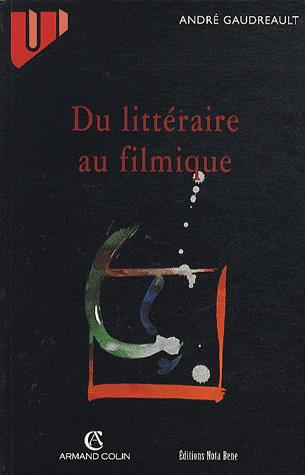
Du littéraire au filmique. Système du récit
André Gaudreault, Armand Colin, 1999
There are a thousand and one ways to tell a story. One kind of story is told by a textual agent, the narrator, while another appears on the contrary to have been distilled by the very same person who composed it, the author. Going against narratological orthodoxy in the matter, the narrative system on which this volume is based posits that whatever the case at hand there is an intermediary agent, the mega-narrator, located between the author and his or her narrative text. This mega-narrator is fundamentally responsible for narrative communication. The narrative practices of novelists, playwrights and filmmakers are examined from the perspective of a “narratology of expression” in order to cast new light on the most important narrative principles. A re-reading of Plato’s Republic and a re-examination of certain now classical narratological “cases” (from The Arabian Nights to Proust’s In Search of Lost Time) make it possible to define the two fundamental modes of narrative communication: narration and monstration. Using these concepts, the book lays the groundwork for a narratological theory of cinema, applied in the first instance to early cinema.
PEER-REVIEWED ARTICLES AND CONTRIBUTIONS TO COLLECTIVE VOLUMES (2015 TO 2020) :
« Résilience du mot “cinéma” et persistance du média», Anais do V Simpósio Internacional de Inovação em Mídias Interativas, 2019, (version très largement augmentée d’une communication intitulée « La résilience du “cinéma” » transmise par vidéoconférence le 11 mai 2018 au 5e Symposium international sur l’innovation dans les médias interactifs (SIIMI), organisé par le Media Lab de l’Universidade Federal de Goiás, à Goiânia, au Brésil). En anglais « The Resilience of the Word “Cinema” and the Persistence of the Media », dans Richard Grusin et Jocelyn Szczepaniak-Gillece (dir.), Ends of Cinema, Minneapolis, University of Minnesota Press, à paraître en 2020. PDF
Complete list here.


